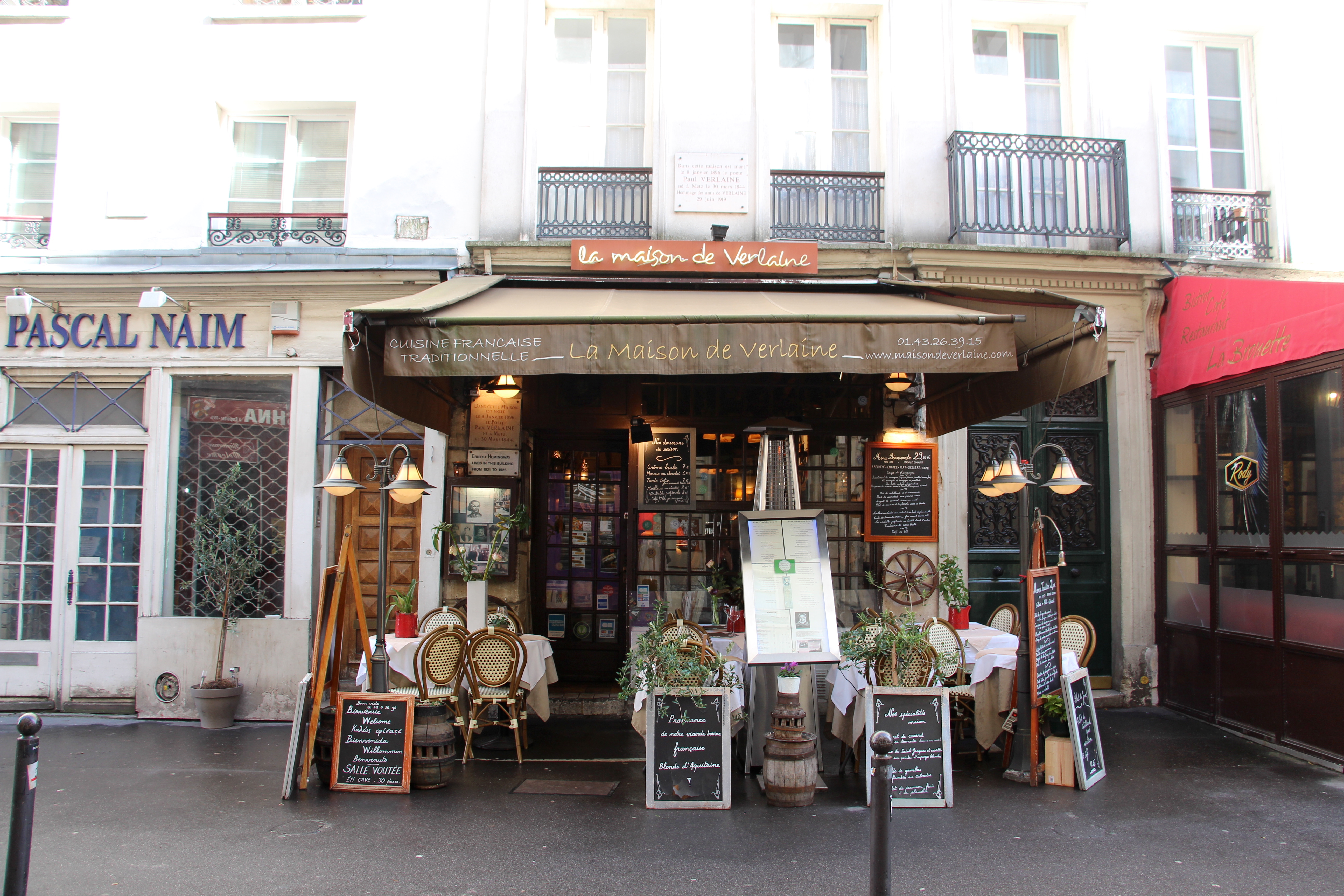1. Literature and Paris are firmly entwined, from the thespians of the 17th century like Molière and Corneille to the 18th century philosophical essayists like Voltaire and Montesquieu to the 19th century novelists like Victor Hugo and Honoré de Balzac and into the 20th century with existentialists Jean-Paul Sartre and Simone de Beauvoir. It’s no wonder that Paris is home to so many spots that these illustrious literary minds once visited.
This restaurant in the 5th arrondissement is located in the former home of not one but two famed writers: Lost Generation star Ernest Hemingway and poet Paul Verlaine, whose poem “Feuilles d’automne” was notably broadcast via BBC radio to signal the arrival of the Allies on D-Day to the French Resistance:
Les sanglots longs
Des violons
De l’automne
Blessent mon coeur
D’une langueur
Monotone.
2. Right around the corner sits yet another address of Hemingway’s; the Lost Generation novelist actually had two apartments in the Latin Quarter, one where he lived with his wife Hadley and son Bumby and the other where he went to write. (Life was different in the 20s… and yet Hem claims to have strangled pigeons in the Luxembourg Gardens in order to feed his family, so paying rent on two apartments – even if they were cheaper than they are today – seems slightly excessive).
This blue front door leads to the familial Hemingway apartment; the address Hem shared with Verlaine was home to his office.
3. Barely a three-minute walk away is the building in which Sylvia Beach, the owner of the Shakespeare and Company bookshop, found an apartment for James Joyce. The demanding writer pretty much drained Beach’s time and funds over the course of the eight-year process of writing Ulysses, but Beach believed so much in him that she didn’t mind and even saw herself as his patron, in the vein of Medieval and Renaissance arts patrons. To learn more about their very codependent (but very interesting) relationship, this book is a fantastic resource.
4. Speaking of Shakespeare and Company, this bookstore is constantly teeming with tourists and anglophones – so much so that in recent years, there’s usually a line to get in. But what some people don’t know is that despite sharing a name with the shop that Beach founded and that served as a meeting place for anglophone and French writers of the time, this shop is not the same shop – or even in the same location – as the original, which can be found closer to Odeon.
The current iteration of the shop was opened in 1951 by American George Whitman; it was a meeting place, not for Lost Generation writers but for the Beat poets. The shop was originally called Le Mistral, though Whitman changed the name in homage to Beach, with her blessing, after she said that his was the “spiritual successor” of her own shop.
5. Shakespeare is far from the only bookstore in the neighborhood; in fact, this part of Paris used to have dozens of them. While there are fewer now than there once were, you’ll still find gems like Berkeley Books and L’Écume des Pages, two of my favorites.
La Hune, depicted here, has long been an emblematic bookstore in the area, but in recent years, it’s been going through some tough times. It closed in 2015 only to have supporters rally for it, and it reopened in the same year.It remained open until November, when it caught fire in a freak accident. A recent sign in the window explains, however, that La Hune isn’t gone yet and will soon reopen.





1 thought on “Monday Postcards of Literary Paris”
Comments are closed.